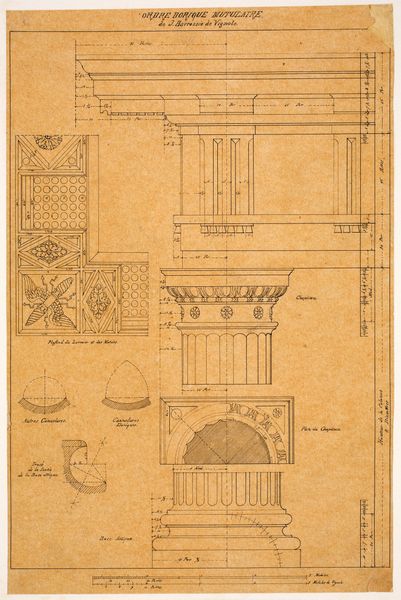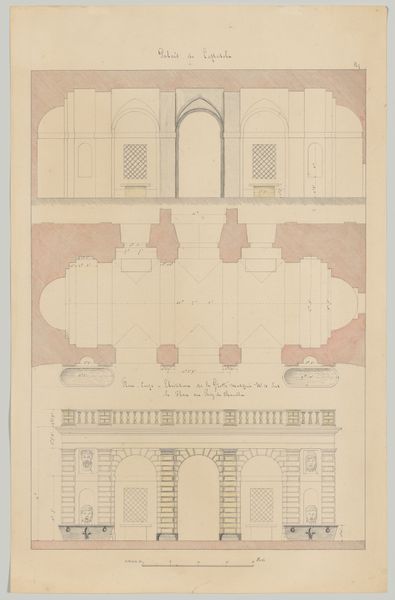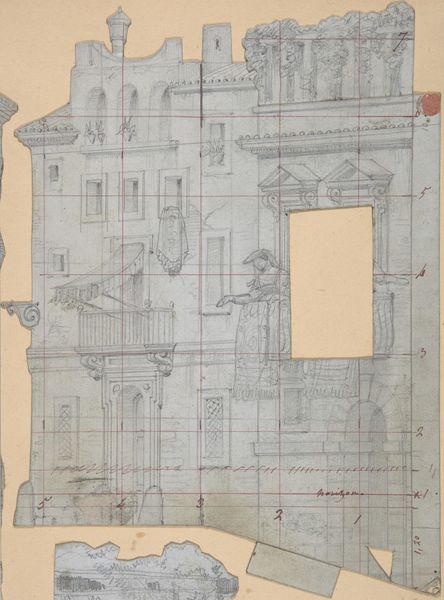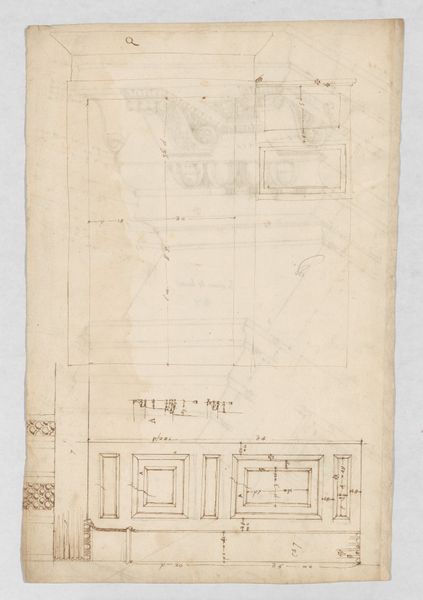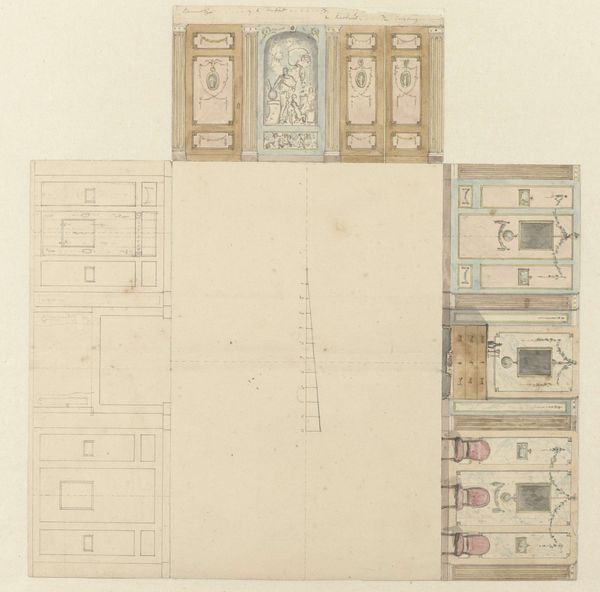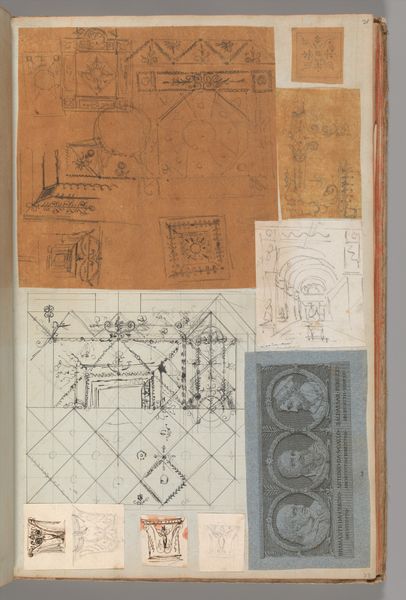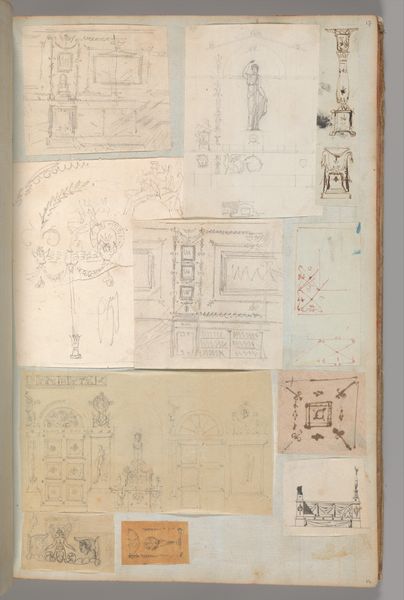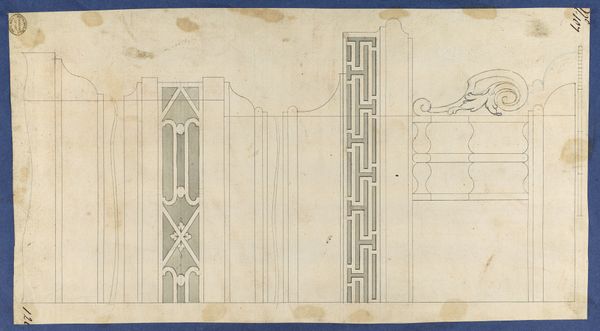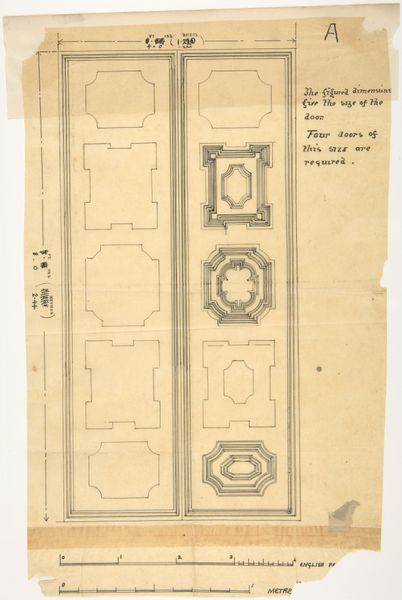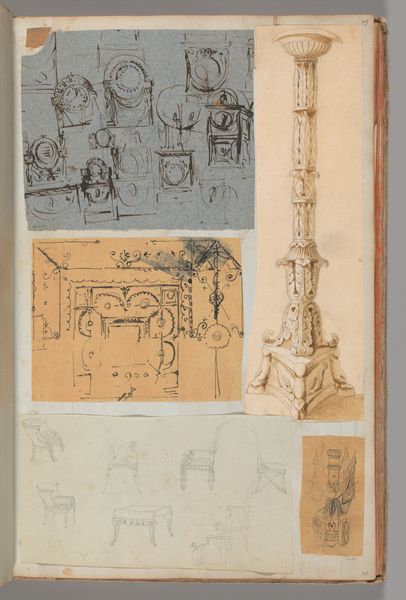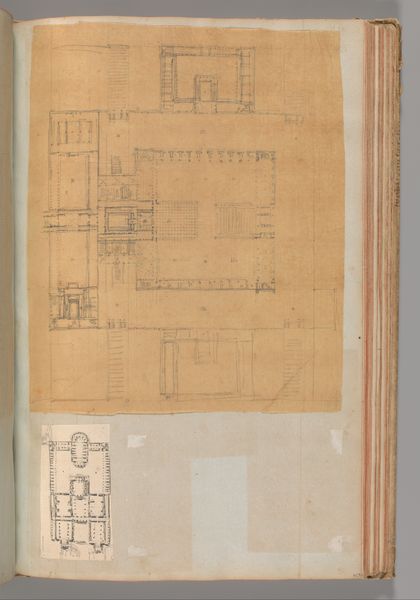
Draft drawings for the breakfast room of the apartment Eisler Terramare, ladies desk chair with retractable 1903
0:00
0:00
drawing, paper, watercolor, ink
#
drawing
#
art-nouveau
#
water colours
#
paper
#
text
#
watercolor
#
ink
#
geometric
#
watercolor
Copyright: Public domain
Curator: This intriguing piece is entitled “Draft drawings for the breakfast room of the apartment Eisler Terramare, ladies desk chair with retractable," crafted by Koloman Moser in 1903. We see renderings in watercolor and ink of proposed furniture and design elements. Editor: My initial impression is that these designs convey a sense of aspiration and a striving for functional beauty, I wonder about the gendered designation of furniture within a shared living space, and the deeper implications it might carry. Curator: Yes, the "ladies desk chair" definitely reflects early 20th century gendered divisions of labor and space. Moser was a prominent figure in the Wiener Werkstätte, an important movement associated with the Gesamtkunstwerk – the idea of the total work of art, encompassing all aspects of life. Editor: Exactly. It highlights the workshop's ambition to redefine domestic environments. Look how the geometric motifs and symmetrical organization express a desire to harmonize everyday objects. It attempts to resolve gender roles and domestic life. Curator: He's playing with Art Nouveau's organic forms, but in a more disciplined way than you might expect, using repeated patterns and strong lines. This shift towards geometry presages the coming modernist movements and represents a critical change within design as a cultural practice. Editor: It's more than a visual shift, I believe. Consider that this design might represent both empowerment and confinement. Providing women a "ladies desk chair" implies acknowledgment of female intellectual pursuits, yet simultaneously confines these activities to specific furniture, perpetuating stereotypes and potentially undermining true equality in living spaces. Curator: Absolutely. By analyzing the design’s socio-political contexts, we expose the contradictions inherent in design movements attempting social reform. Moser was trying to transform design, but was constrained by pre-existing ideas. Editor: For me, this "Draft drawing..." invites us to contemplate how art, design, and social change can intersect, yet the narrative we tell reveals contradictions and nuances beyond pretty images. Curator: Agreed. There is plenty here for contemporary thinkers to appreciate, ponder, and critique from their unique positions.
Comments
No comments
Be the first to comment and join the conversation on the ultimate creative platform.
